Effects of a Macromolecule Spirocyclic Inflatable Flame Retardant on the Thermal and Flame Retardant Properties of Epoxy Resin
Abstract
1. Introduction
2. Experimental Section
2.1. Materials
2.2. Synthesis of SAPC
2.3. Preparation of the Composites EP/SAPC
2.4. Characterization
3. Results
3.1. Characterization of the Structure and Thermal Stability of SAPC
3.2. Analysis on Thermal Properties of EP/SAPC Composites
3.3. Analysis on Fire Safety of EP/SAPC Composites
3.4. Analysis on the Flame-Retardant Mechanism of Condensed Phase for EP/SAPC Composites
3.5. Analysis of Gas Phase Flame Retardant Mechanism of EP/SAPC Composites
4. Conclusions
Author Contributions
Funding
Conflicts of Interest
References
- Tripathy, R.; Ojha, U.; Faust, R. Polyisobutylene modified bisphenol a diglycidyl ether based epoxy resins possessing improved mechanical properties. Macromolecules 2011, 44, 6800–6809. [Google Scholar] [CrossRef]
- Jiang, S.D.; Tang, G.; Chen, J.; Huang, Z.Q.; Hu, Y. Biobased polyelectrolyte multilayer-coated hollow mesoporous silica as a green flame retardant for epoxy resin. J. Hazard. Mater. 2018, 342, 689–697. [Google Scholar] [CrossRef] [PubMed]
- Jiang, J.; Cheng, Y.; Liu, Y.; Wang, Q. Intergrowth charring for flame-retardant glass fabric-reinforced epoxy resin composites. J. Mater. Chem. A 2015, 3, 4284–4290. [Google Scholar] [CrossRef]
- Xu, Z.S.; Jia, H.Y.; Yan, L.; Chu, Z.Y.; Zhou, H. Synergistic effect of bismuth oxide and mono-component intumescent flame retardant on the flammability and smoke suppression properties of epoxy resins. Polym. Adv. Technol. 2019, 31, 25–35. [Google Scholar] [CrossRef]
- Feng, G.Y.; Cao, H.J.; Zhang, K.; Qian, K. Flame retardation of epoxy resin with expansible graphite. J. Mater. Sci. Technol. 2016, 34, 772–775. [Google Scholar]
- Zhang, W.C. The Research on the Mechanism and Application of Blowing-out Flame Retarded Epoxy Resins; Beijing Institute of Technology: Beijing, China, 2013. [Google Scholar]
- Wang, S.J.; Xin, F.; Qian, L.J.; Chen, Y.J. Phosphorus-nitrogen containing polymer wrapped carbon nanotubes and their flame-retardant effect on epoxy resin. Polym. Degrad. Stab. 2016, 129, 133–141. [Google Scholar] [CrossRef]
- Yu, B.; Xing, W.; Guo, W.; Qiu, S.L.; Wang, X.; Lo, S.M.; Hu, Y. Thermal exfoliation of hexagonal boron nitride for effective enhancements on thermal stability, flame retardancy and smoke suppression of epoxy resin nanocomposites via sol–gel process. J. Mater. Chem. A 2016, 4, 7330–7340. [Google Scholar] [CrossRef]
- Ma, H.; Zhao, L.; Liu, J.; Wang, J.; Xu, Z.J. Functionalizing carbon nanotubes by grafting cyclotriphosphazene derivative to improve both mechanical strength and flame retardancy. Polym. Compos. 2014, 35, 2187–2193. [Google Scholar] [CrossRef]
- Zhang, Z.D.; Qin, J.Y.; Zhang, W.C.; Pan, Y.T.; Wang, D.Y.; Yang, R.J. Synthesis of a novel dual layered double hydroxide hybrid nanomaterial and its application in epoxy nanocomposites. Chem. Eng. J. 2020, 381, 122777. [Google Scholar] [CrossRef]
- Xu, J.Y.; Hu, Y.; Wang, Q.A.; Fan, W.C.; Song, L. Green chemistry and technology in flame retardant materials industry. Polym. Eng. Sci. 2002, 18, 17–21. [Google Scholar]
- Shu, W.G.; Wu, Z.P. Research progress and application of intumescent flame retardant. Plast. Addit. 2002, 2, 2–4. [Google Scholar]
- Wang, N.; Teng, H.; Yang, F.; You, J.; Zhang, J.; Wang, D. Synthesis of K-Carrageenan flame-retardant microspheres and its application for waterborne epoxy resin with functionalized graphene. Polymers 2019, 11, 1708. [Google Scholar] [CrossRef] [PubMed]
- Shi, Y.; Wang, G. The novel silicon-containing epoxy/PEPA phosphate flame retardant for transparent intumescent fire resistant coating. Appl. Surf. Sci. 2016, 385, 453–463. [Google Scholar] [CrossRef]
- Antonopouloua, M.; Giannakasa, A.; Bairamisb, F.; Papadakia, M.; Konstantinou, I. Degradation of organophosphorus flame retardant tris (1-chloro-2-propyl) phosphate (TCPP) by visible light N,S-codoped TiO2 photocatalysts. Chem. Eng. J. 2016, 318, 231–239. [Google Scholar] [CrossRef]
- Yan, H.Q.; Li, N.N.; Fang, Z.P.; Wang, H. Application of poly(diphenolic acid-phenyl phosphate)-based layer by layer nanocoating in flame retardant ramie fabrics. J. Appl. Polym. Sci. 2017, 134, 1–13. [Google Scholar] [CrossRef]
- Huang, G.B.; Zhu, B.C.; Shi, H.B. Combination effect of organics-modified montmorillonite with intumescent flame retardants on thermal stability and fire behavior of polyethylene nanocomposites. J. Appl. Polym. Sci. 2011, 121, 1285–1291. [Google Scholar] [CrossRef]
- Alongi, J.; Han, Z.D.; Bourbigot, S. Intumescence: Tradition versus novelty. A Compr. Rev. Prog. Polym. Sci. 2015, 51, 28–73. [Google Scholar] [CrossRef]
- Liu, W.; Chen, L.; Wang, Y. A novel phosphorus-containing flame retardant for the formaldehyde-free treatment of cotton fabrics. Polym. Degrad. Stab. 2012, 97, 2487–2491. [Google Scholar] [CrossRef]
- Wang, L.C.; Jiang, J.Q.; Jiang, P.K.; Yu, J.H. Synthesis, characteristic of a novel flame retardant containing phosphorus, silicon and its application in ethylene vinyl-acetate copolymer (EVM) rubber. J. Polym. Res. 2010, 17, 891–902. [Google Scholar] [CrossRef]
- Su, Y. Study on Synthesis and Flame Retardant Properties of Polymerized Phosphoamide Flame Retardant; Beijing Institute of Technology: Beijing, China, 2017. [Google Scholar]
- Horrocks, A.R.; Zhang, S. Enhancing polymer char formation by reaction with phosphorylated polyols. 1. Cellulose. Polymer 2001, 42, 8025–8033. [Google Scholar] [CrossRef]
- Ba, M.W.; Wang, C.S.; Liang, B. Synthesis of a novel phosphorus-nitrogen-boron flame retardant. Chin. J. Syn. Chem. 2017, 25, 515–519. [Google Scholar]
- Wang, X.; Hu, Y.; Song, L.; Xing, W.Y.; Lu, H.D.; Lv, P.; Jie, G.X. Flame retardancy and thermal degradation mechanism of epoxy resin composites based on a DOPO substituted organophosphorus oligomer. Polymer 2010, 51, 2435–2445. [Google Scholar] [CrossRef]
- Du, B.; Ma, H.; Fang, Z. How nano-fillers affect thermal stability and flame retardancy of intumescent flame retarded polypropylene. Polym. Adv. Technol. 2011, 22, 1139–1146. [Google Scholar] [CrossRef]
- Jiang, D.W.; Sun, C.Y.; Zhou, Y.N.; Wang, H.; Yan, X.R.; He, Q.L.; Guo, J.; Gou, Z.H. Enhanced flame retardancy of cotton fabrics with a novel intumescent flame-retardant finishing system. Fibers Polym. 2015, 16, 388–396. [Google Scholar] [CrossRef]
- Ren, Y.L.; Gu, Y.T.; Zeng, Q.; Zhang, Y. UV-induced surface grafting polymerization for preparing phosphorus-containing flame retardant polyacrylonitrile fabric. Eur. Polym. J. 2017, 94, 1–10. [Google Scholar] [CrossRef]
- Wu, D.H.; Zhao, P.H.; Liu, Y.Q. Flame retardant property of novel intumescent flame retardant rigid polyurethane foams. Polym. Eng. Sci. 2013, 53, 2478–2485. [Google Scholar] [CrossRef]
- Hu, X.P.; Yang, J.; Li, X.Y.; Li, S.X.; Li, H.B.; Zhou, Y.L. Properties of a intumescent flame retardant containing SPDPC prepared by melting polymerization. China Plast. 2009, 23, 71–75. [Google Scholar]
- Zhao, D.; Wang, J.; Wang, X.L.; Wang, Y.Z. Highly thermostable and durably flame-retardant unsaturated polyester modified by a novel polymeric flame retardant containing Schiff base and spirocyclic structures. Chem. Eng. J. 2018, 344, 419–430. [Google Scholar] [CrossRef]
- Wang, Z.G.; Liang, B. Synthesis and properties of phosphorus and nitrogen containing intumescent flame-retardant curing agent for epoxy resin. Plast. Rubber Compos. 2018, 47, 306–314. [Google Scholar] [CrossRef]
- Sun, W.L.; He, Q.L.; Luo, Y. Synthesis and properties of cinnamic acid series organic UV ray absorbents-interleaved layered double hydroxides. Mater. Lett. 2007, 61, 1881–1884. [Google Scholar] [CrossRef]
- Gao, Y.S.; Wu, J.W.; Zhang, Z.; Jin, R.; Zhang, X.; Yan, X.R.; Umar, A.; Guo, Z.H.; Wang, Q. Synthesis of polypropylene/Mg3Al-X (X=C, N, Cl−, S) LDH nanocomposites using a solvent mixing method: Thermal and melt rheological properties. J. Mater Chem. A 2013, 1, 9928–9934. [Google Scholar] [CrossRef]
- Cai, J.; Heng, H.M.; Hu, X.P.; Xu, Q.K.; Miao, F. A facile method for the preparation of novel fire-retardant layered double hydroxide and its application as nanofiller in UP. Polym. Degrad. Stab. 2016, 126, 47–57. [Google Scholar] [CrossRef]
- Chen, P.P. Synthesis and Structure—Activity Research of Spirocyclic Phosphate Flame Retardants; Northeast Forestry University: Harbin, China, 2015. [Google Scholar]
- Duan, Y.Y.; Hu, Y.H.; Wang, X.Y. Preparation and property of a novel flame retardant containing P/N/Si for ABS resin. New. Chem. Mater. 2017, 45, 119–121. [Google Scholar]
- Zhan, J.; Song, L.; Nie, S.B.; Hu, Y. Combustion properties and thermal degradation behavior of polylactide with an effective intumescent flame retardant. Polym. Degrad. Stab. 2009, 94, 291–296. [Google Scholar] [CrossRef]
- Liu, W.; Chen, D.Q.; Wang, Y.Z.; Wang, D.Y.; Qu, M.H. Char-forming mechanism of a novel polymeric flame retardant with char agent. Polym. Degrad. Stab. 2007, 92, 1046–1052. [Google Scholar] [CrossRef]
- Ma, H.Y.; Fang, Z.P. Synthesis and carbonization chemistry of a phosphorous–nitrogen based intumescent flame retardant. Thermochim. Acta 2012, 534, 130–136. [Google Scholar] [CrossRef]
- Zhou, Y.; Feng, J.; Peng, H.; Qu, H.Q.; Hao, J.W. Catalytic pyrolysis and flame retardancy of epoxy resins with solid acid boron phosphate. Polym. Degrad. Stab. 2014, 110, 395–404. [Google Scholar] [CrossRef]
- Zhang, Z.D.; Li, X.L.; Yuan, Y.S.; Pan, Y.T.; Wang, D.Y.; Yang, R.J. Confined dispersion of zinc hydroxystannate nanoparticles into layered bimetallic hydroxides nanocapsules and its application in flame retardant epoxy nanocomposites. ACS Appl. Mater. Interfaces 2019, 11, 40951–40960. [Google Scholar] [CrossRef]
- Song, S.Q.; Ma, J.J.; Cao, K.; Chang, G.J.; Huang, Y.W.; Yang, J.X. Synthesis of a novel dicyclic silicon-/phosphorus hybrid and its performance on flame retardancy of epoxy resin. Polym. Degrad. Stab. 2014, 99, 43–52. [Google Scholar] [CrossRef]
- Liang, B.; Wang, G.; Hong, X.D.; Long, J.P.; Tsubaki, N. Synthesis and properties of a new halogen-free flame retardant epoxy resin curing agent. High Perform. Polym. 2016, 28, 110–118. [Google Scholar] [CrossRef]
- Xu, H.J.; Jin, F.L.; Park, S.J. Synthesis of a Novel Phosphorus-containing Flame Retardant for Epoxy Resins. Bull. Korean Chem. Soc. 2009, 30, 2643. [Google Scholar]
- Xu, B.; Wu, X.; Ma, W.; Xin, F.; Qiu, Y. Synthesis and characterization of a novel organic-inorganic hybrid char-forming agent and its flame-retardant application in polypropylene composites. J. Anal. Appl. Pyrol. 2018, 134, 231–242. [Google Scholar] [CrossRef]
- Phan, H.T.; Nguyen, B.T.; Pham, L.H.; Pham, C.T.; Do, T.V.V.; Hoang, C.N.; Nguyen, N.N.; Kim, J.; Hoang, D. Excellent fireproof characteristics and high thermal stability of rice husk-filled polyurethane with halogen-free flame retardant. Polymers 2019, 11, 1587. [Google Scholar] [CrossRef] [PubMed]
- Zhang, L.; Li, Z.; Pan, Y.T.; Hu, S.; Zhang, X.Q.; Wang, R.; Wang, D.Y. Polydopamine induced natural fiber surface functionalization: A way toward flame retardancy of flax/poly(lactic acid) biocomposites. Compos. Part B Eng. 2018, 154, 56–63. [Google Scholar] [CrossRef]
- Xi, W.; Qian, L.; Li, L. Flame retardant behavior of ternary synergistic systems in rigid polyurethane foams. Polymers 2019, 11, 207. [Google Scholar] [CrossRef]
- Chen, H.M.; Chen, J.W.; Jie, C.; Yang, J.H.; Huang, T.; Zhang, N.; Wang, R. Effect of organic montmorillonite on cold crystallization and hydrolytic degradation of poly(-lactide). Polym. Degrad. Stab. 2012, 97, 2273–2283. [Google Scholar] [CrossRef]
- Zhang, W.C.; Li, X.M.; Yang, R.J. Pyrolysis and fire behaviour of epoxy resin composites based on a phosphorus-containing polyhedral oligomeric silsesquioxane (DOPO-POSS). Polym. Degrad. Stab. 2011, 96, 1821–1832. [Google Scholar] [CrossRef]
- Lu, P.P.; Wu, H.F.; Wang, S.Q.; Tong, J.Z.; Huang, G.B. Research progress of synthesis and application of single-component intumescent flame retardants. Mod. Plast. Process. Appl. 2014, 26, 60–63. [Google Scholar]
- Spontón, M.; Ronda, J.C.; Galià, M.; Cádiz, V. Cone calorimetry studies of benzoxazine–epoxy systems flame retarded by chemically bonded phosphorus or silicon. Polym. Degrad. Stab. 2009, 94, 102–106. [Google Scholar] [CrossRef]

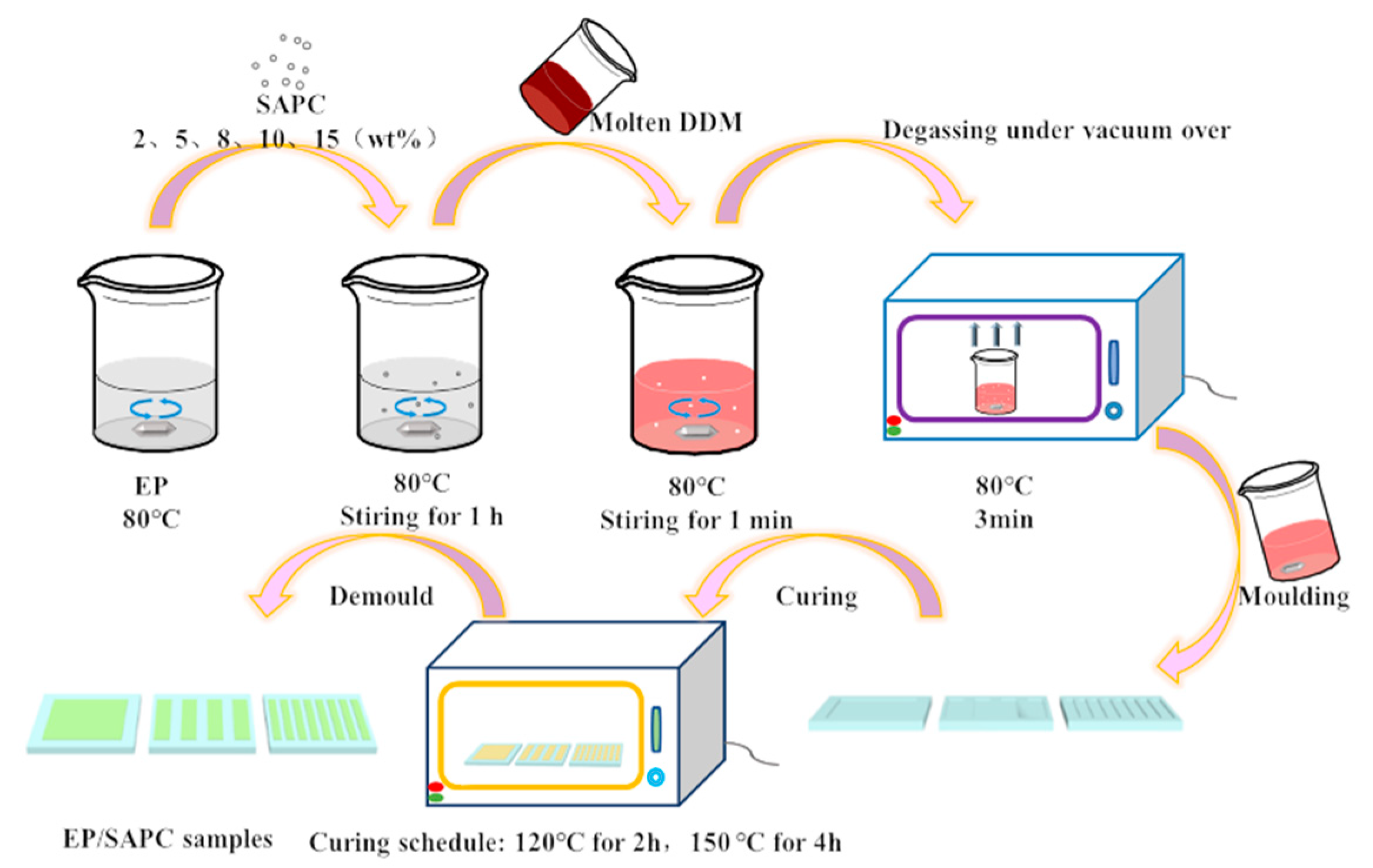
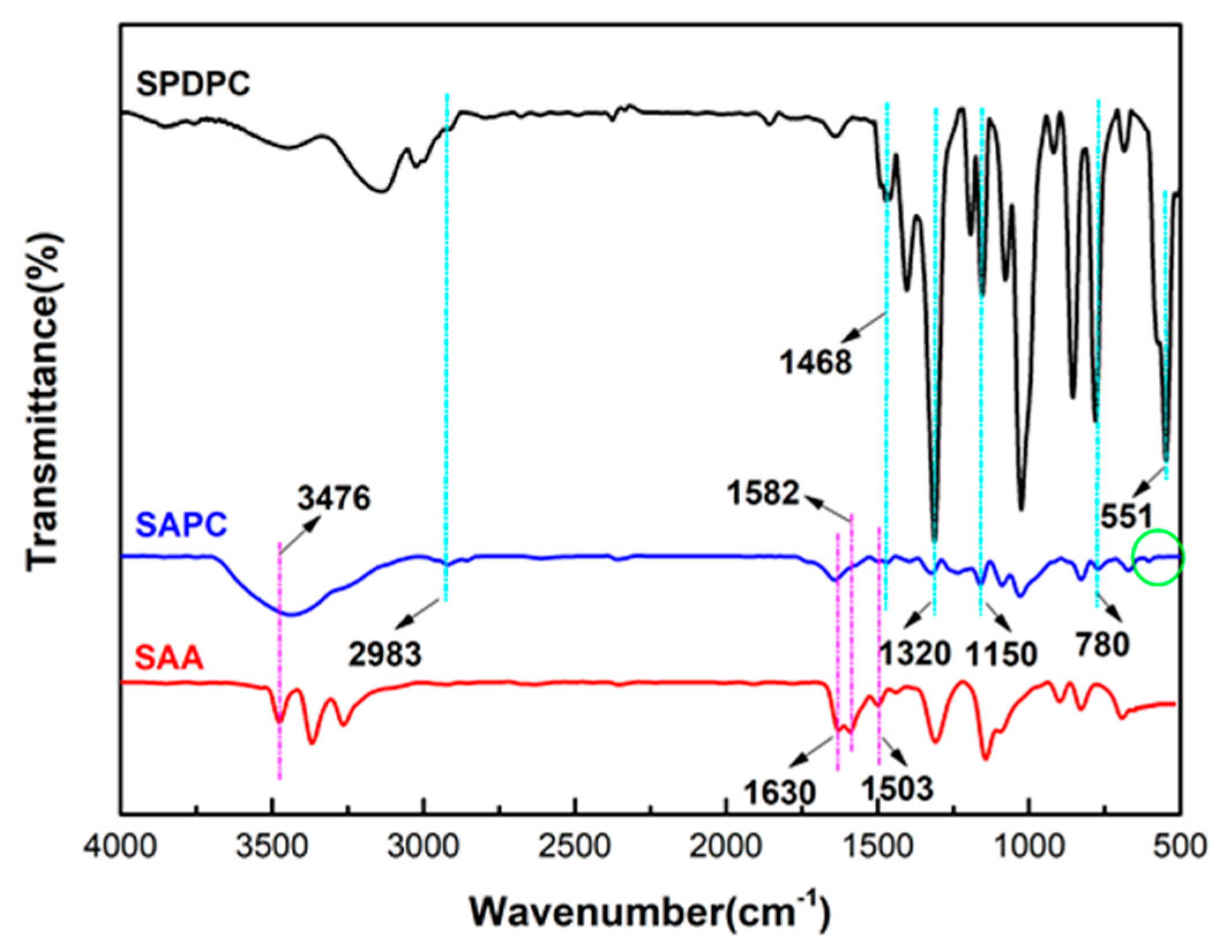
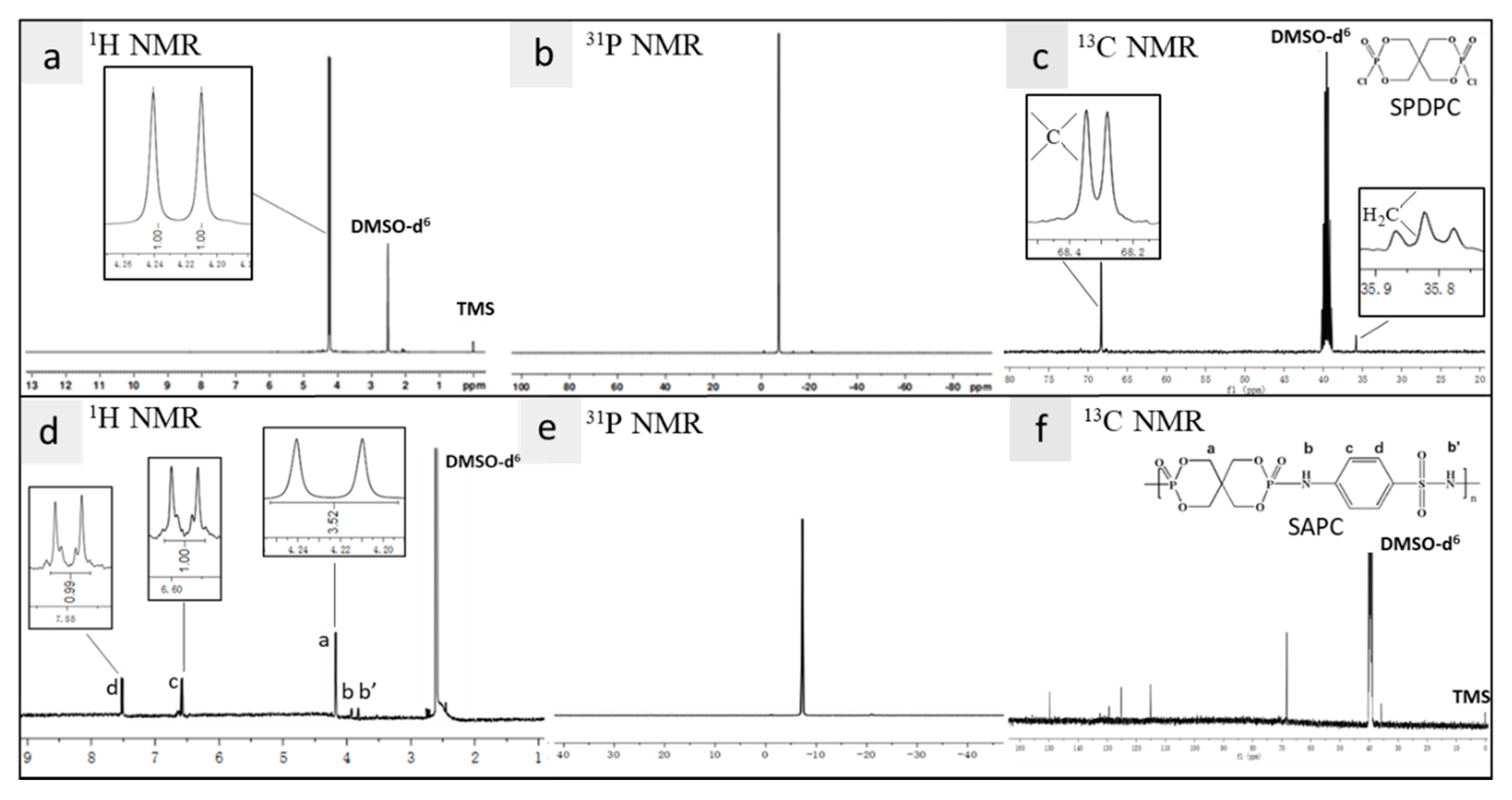
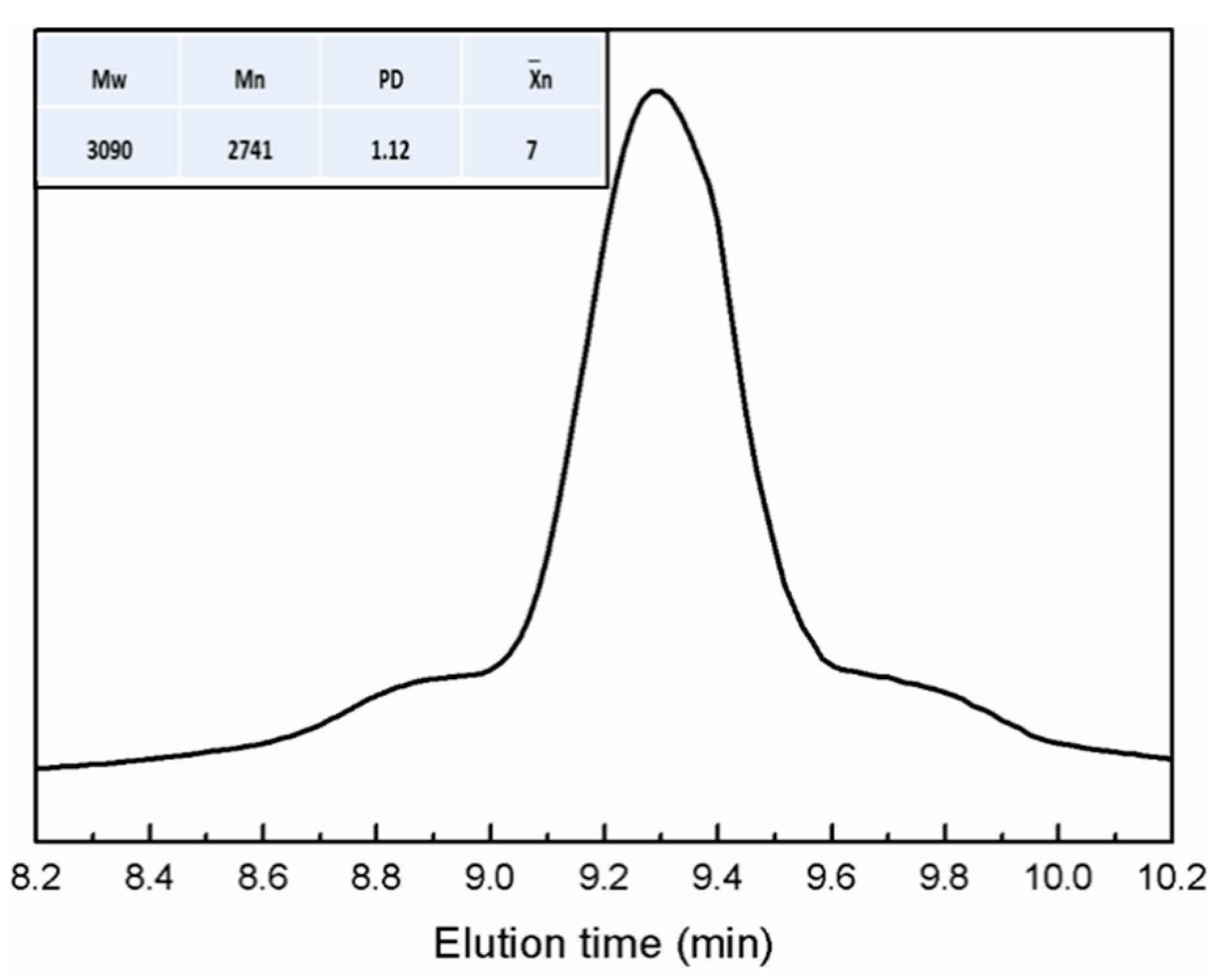
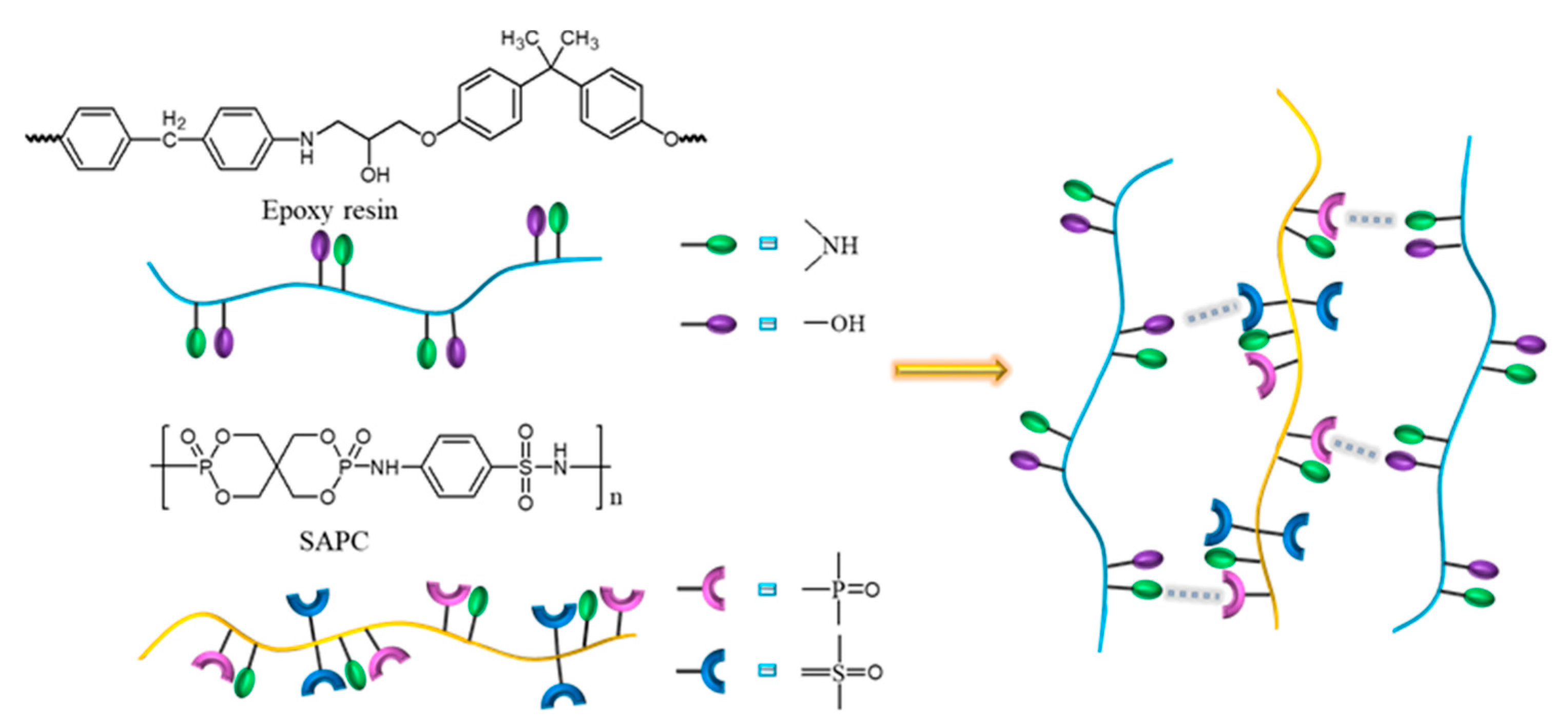
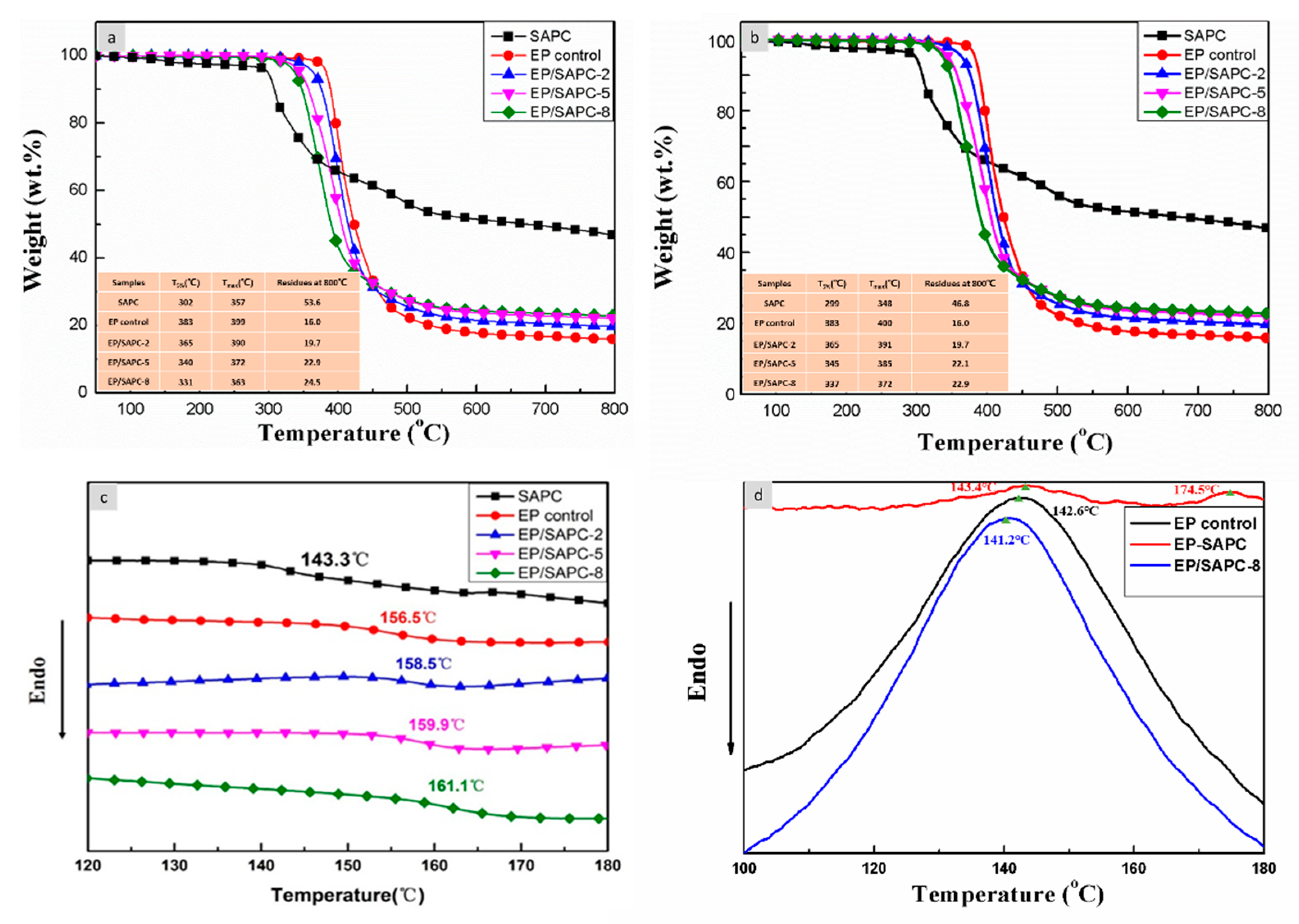
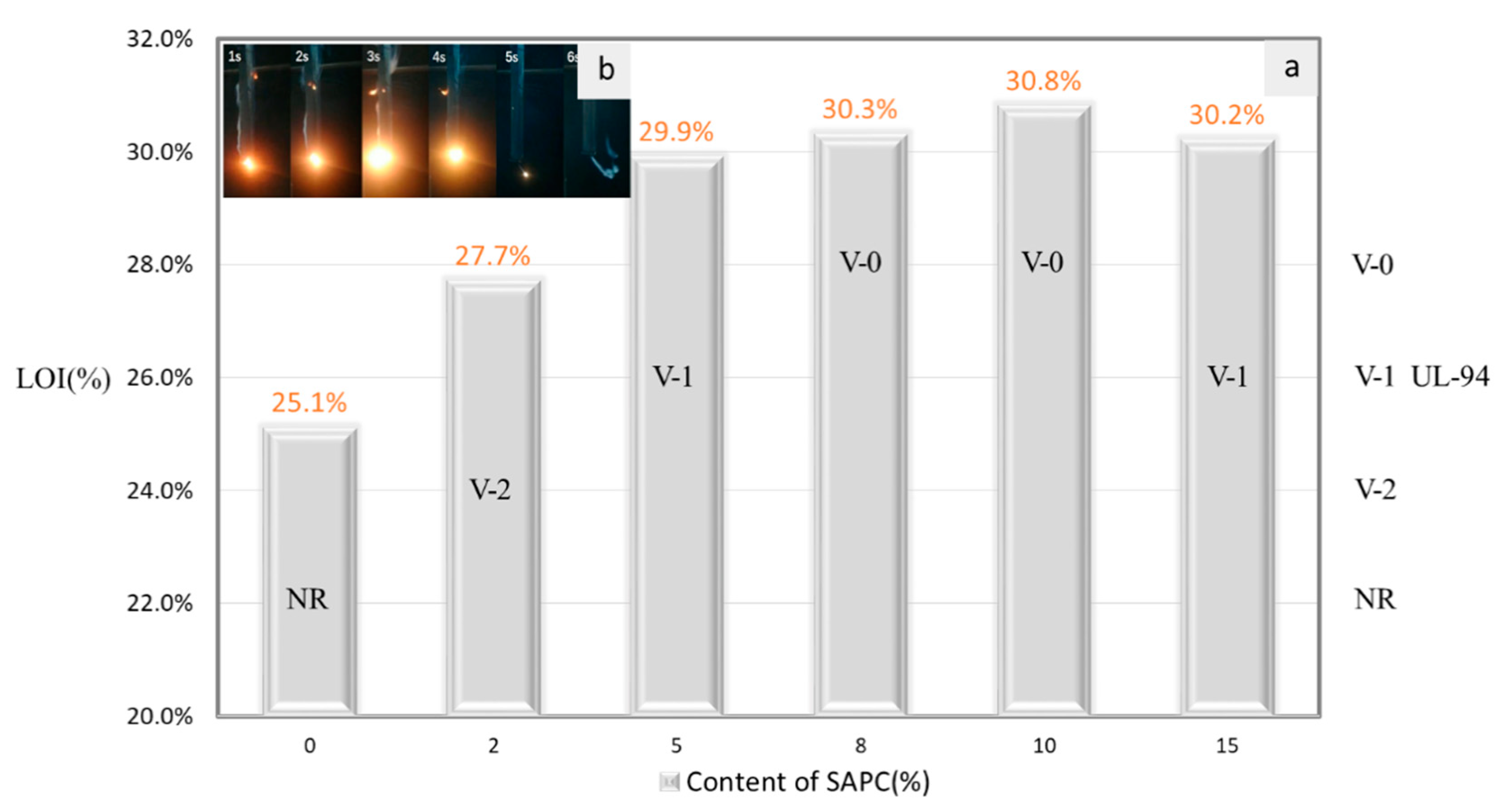
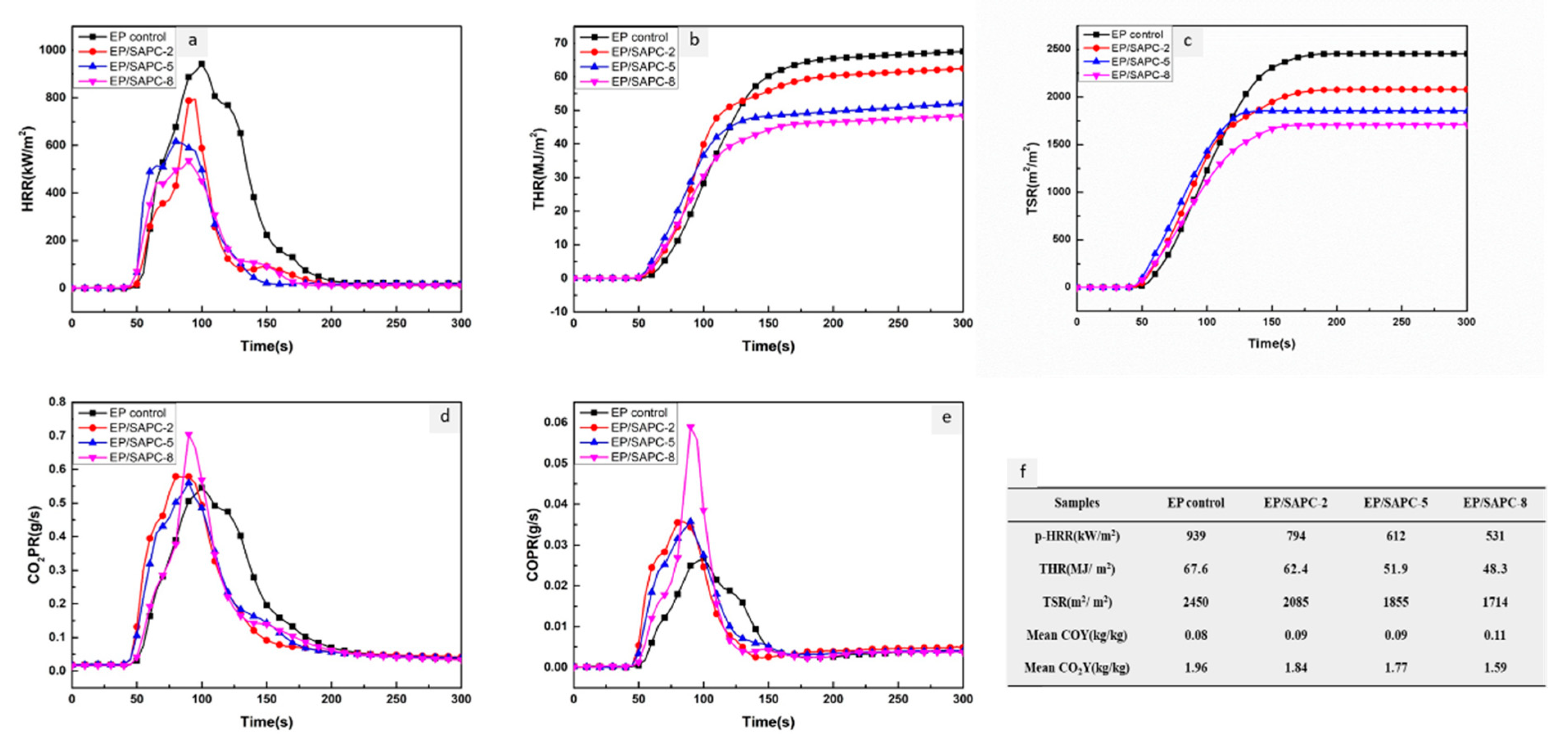
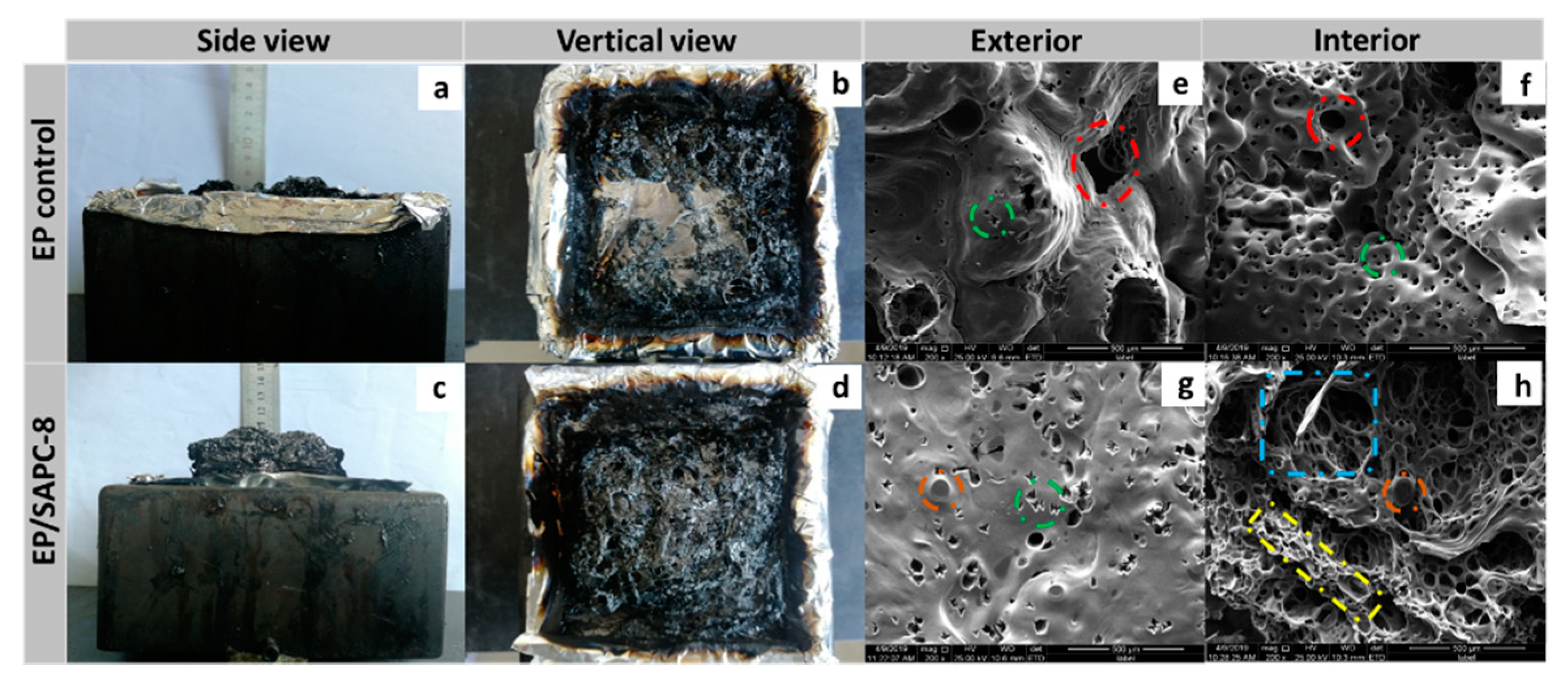
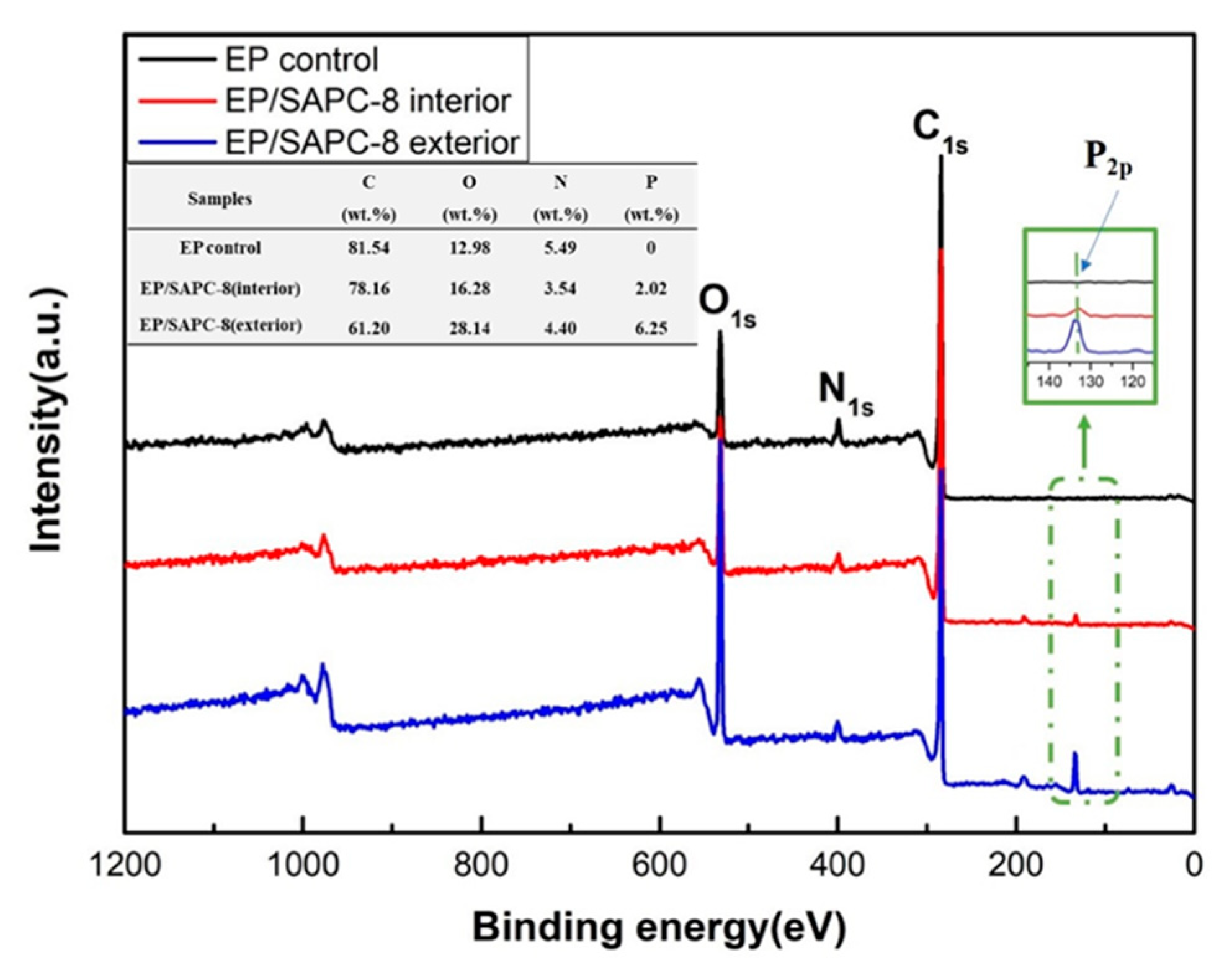
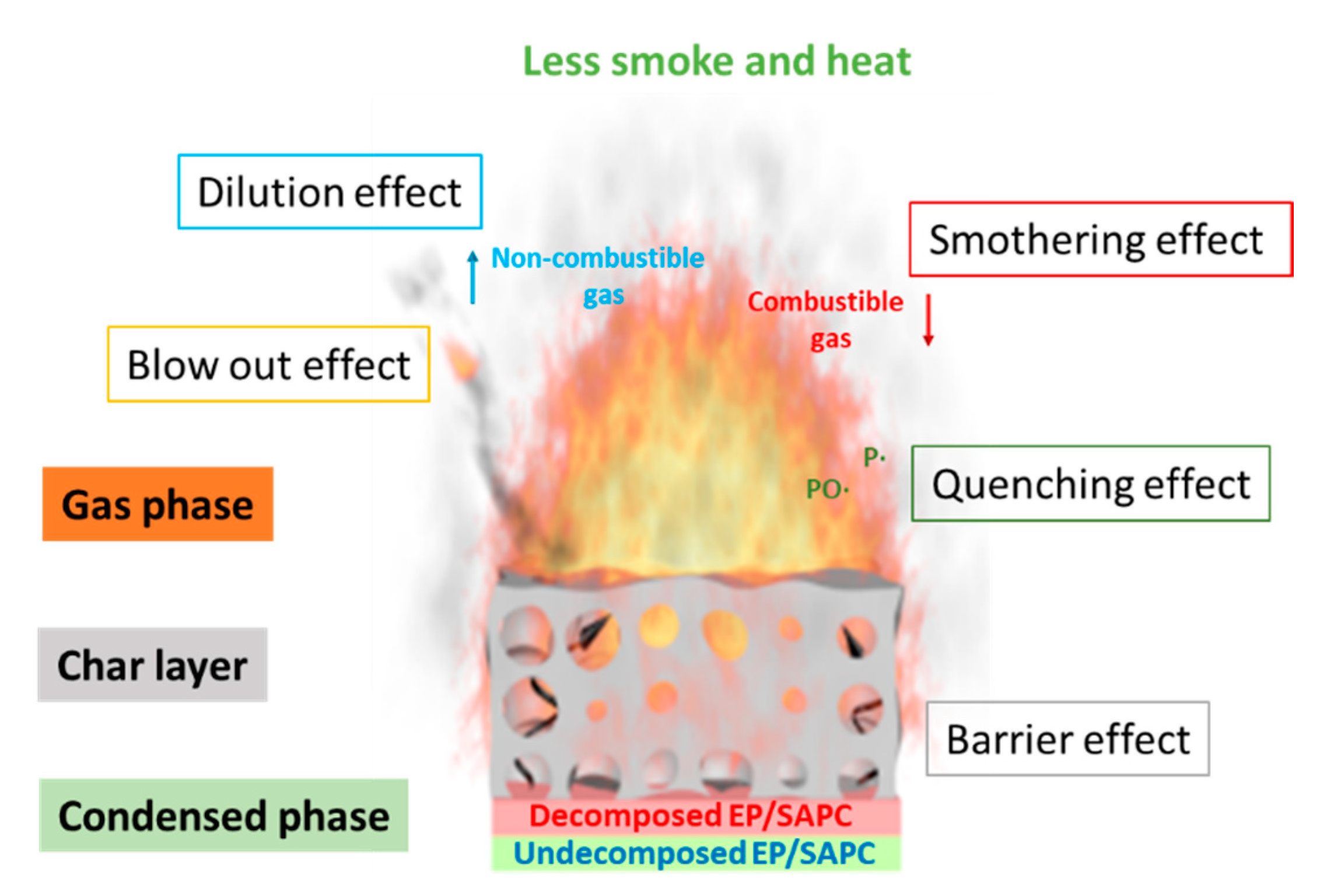
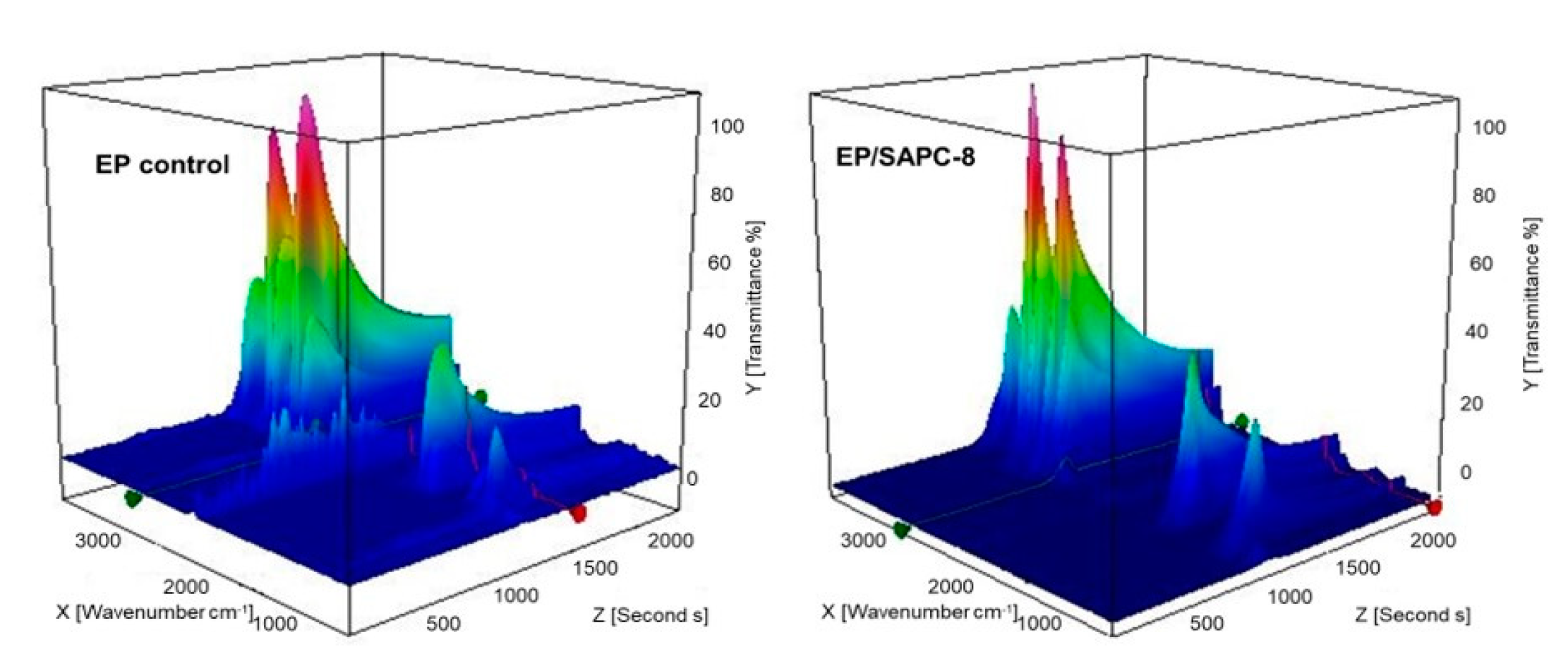
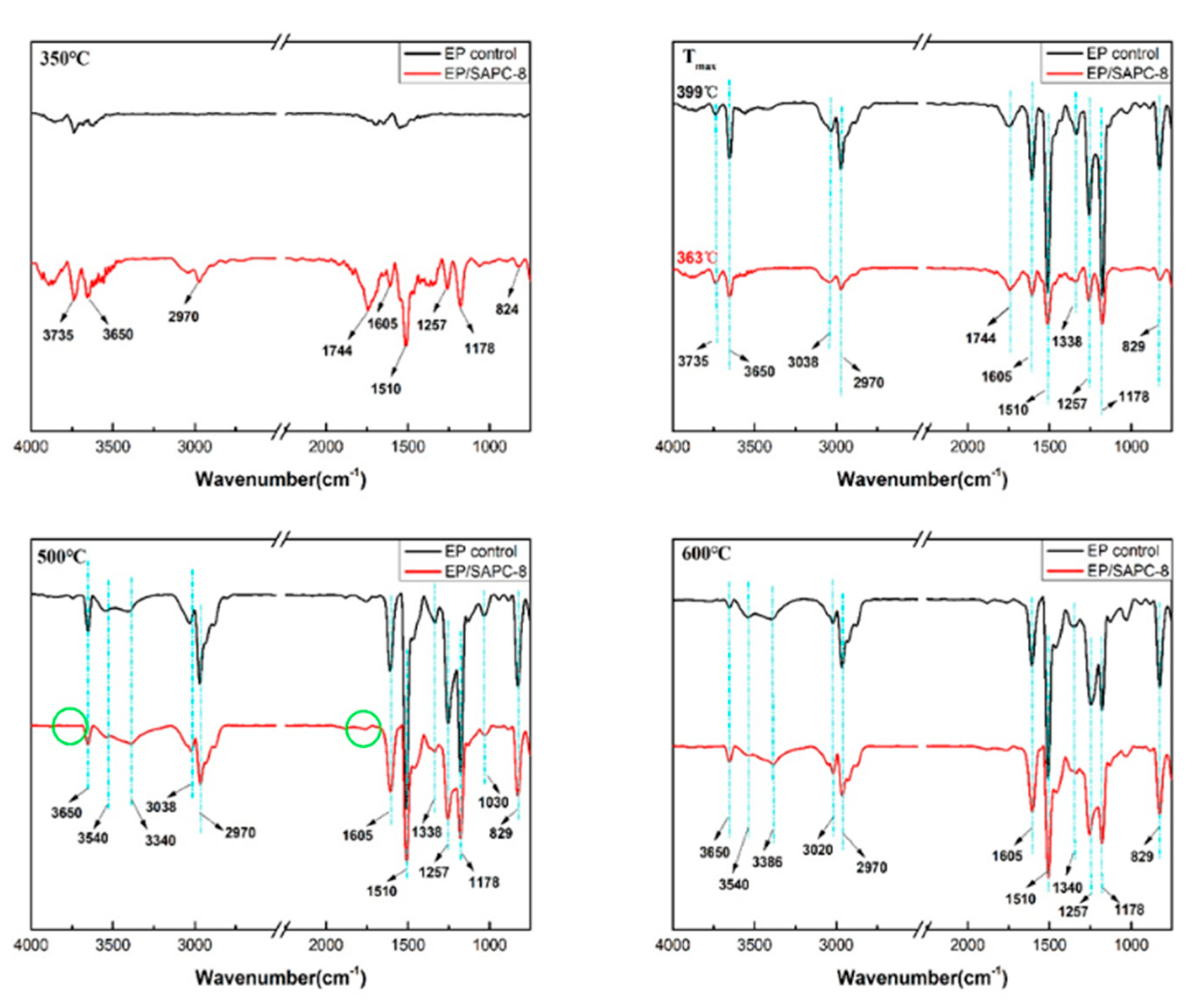
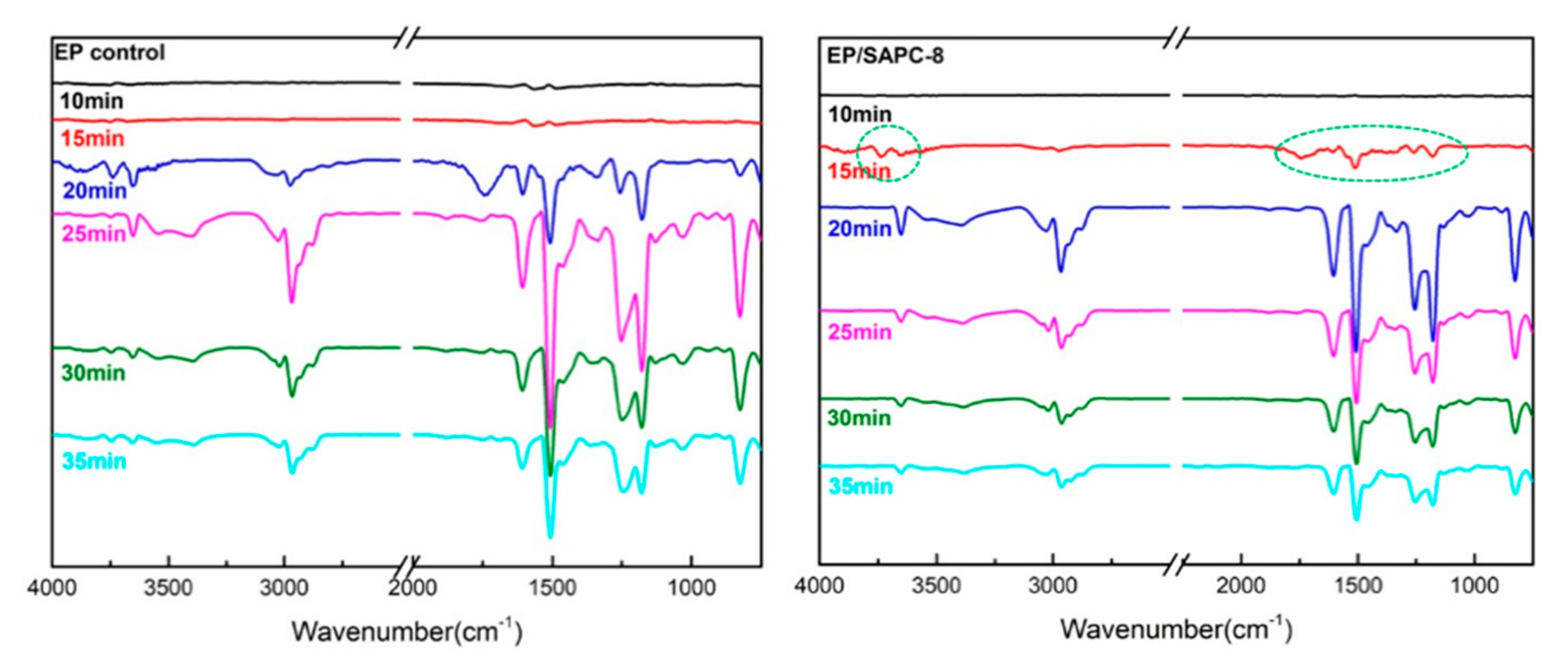
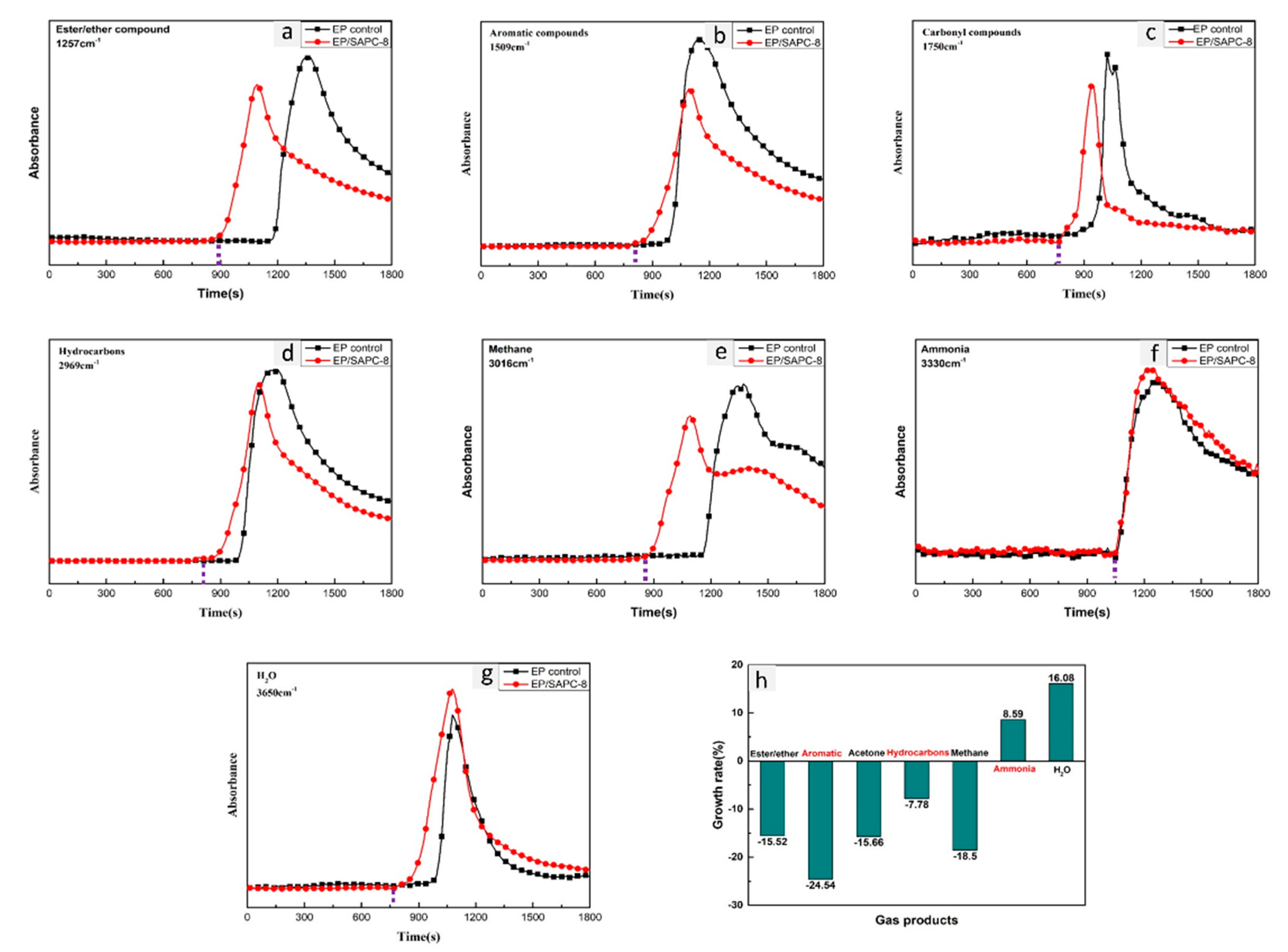
| Wavenumber (cm−1) | Structure |
|---|---|
| 3735,3650 | –OH in H2O and phenols |
| 3038,829 | C–H in aromatic compounds |
| 3540,3340 | N–H in amine compounds |
| 2970 | –CH3, –CH2–in hydrocarbons |
| 1744 | C=O in aldehyde/ketone |
| 1605,1510,1338 | aromatic compounds |
| 1257,1178 | C–O in esters/ethers |
© 2020 by the authors. Licensee MDPI, Basel, Switzerland. This article is an open access article distributed under the terms and conditions of the Creative Commons Attribution (CC BY) license (http://creativecommons.org/licenses/by/4.0/).
Share and Cite
Song, K.; Wang, Y.; Ruan, F.; Liu, J.; Li, N.; Li, X. Effects of a Macromolecule Spirocyclic Inflatable Flame Retardant on the Thermal and Flame Retardant Properties of Epoxy Resin. Polymers 2020, 12, 132. https://doi.org/10.3390/polym12010132
Song K, Wang Y, Ruan F, Liu J, Li N, Li X. Effects of a Macromolecule Spirocyclic Inflatable Flame Retardant on the Thermal and Flame Retardant Properties of Epoxy Resin. Polymers. 2020; 12(1):132. https://doi.org/10.3390/polym12010132
Chicago/Turabian StyleSong, Kunpeng, Yinjie Wang, Fang Ruan, Jiping Liu, Nianhua Li, and Xueli Li. 2020. "Effects of a Macromolecule Spirocyclic Inflatable Flame Retardant on the Thermal and Flame Retardant Properties of Epoxy Resin" Polymers 12, no. 1: 132. https://doi.org/10.3390/polym12010132
APA StyleSong, K., Wang, Y., Ruan, F., Liu, J., Li, N., & Li, X. (2020). Effects of a Macromolecule Spirocyclic Inflatable Flame Retardant on the Thermal and Flame Retardant Properties of Epoxy Resin. Polymers, 12(1), 132. https://doi.org/10.3390/polym12010132





